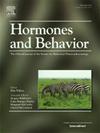What do we measure when we measure pubertal development? Conceptual challenges in measuring and interpreting pubertal effects on brain and behavior
IF 2.4
3区 医学
Q2 BEHAVIORAL SCIENCES
引用次数: 0
Abstract
Pubertal development is believed to influence cognitive and behavioral development during adolescence, but measuring puberty is challenging. Difficulties stem not only from practical issues, which have been extensively discussed in the literature, but also from the inherent complexity of pubertal development from a physiological perspective. Here we discuss conceptual issues related to measuring and interpreting pubertal effects on brain, cognitive, and behavioral development. Our analysis shows that all currently used measures, both those based on the assessment of external physical characteristics and those based on measuring relevant hormones form biological samples, share significant limitations that hinder their interpretation. These limitations arise from the fact that puberty is not a unitary phenomenon, cannot be measured directly nor be defined by individual makers, and its different markers are often discordant. Moreover, its effects on brain development, cognition, and behavior are bound to involve a complex causal thicket, requiring an integrative assessment of pubertal development. We argue that a possible compromise between practical issues (building feasible/reliable measures) and theoretical ones (building conceptually sound and interpretable measures) is to treat puberty as the variance shared among multiple pubertal indicators, combining physical markers and hormonal measures.
当我们测量青春期发育时,我们测量的是什么?测量和解释青春期对大脑和行为影响的概念挑战
青春期的发育被认为会影响青春期的认知和行为发展,但青春期的测量是具有挑战性的。困难不仅来自文献中广泛讨论的实际问题,而且从生理学的角度来看,青春期发展的内在复杂性也是困难的。在这里,我们讨论了与测量和解释青春期对大脑、认知和行为发展的影响有关的概念问题。我们的分析表明,所有目前使用的测量方法,无论是基于外部物理特征的评估,还是基于测量生物样本中相关激素的测量,都有显著的局限性,阻碍了它们的解释。这些限制来自这样一个事实:青春期不是一个单一的现象,不能直接测量,也不能由个体制造者定义,它的不同标志往往是不一致的。此外,它对大脑发育、认知和行为的影响必然涉及复杂的因果关系,需要对青春期发育进行综合评估。我们认为,在实际问题(建立可行/可靠的测量方法)和理论问题(建立概念上合理和可解释的测量方法)之间可能的妥协是将青春期视为多种青春期指标之间共享的方差,结合物理标记和激素测量。
本文章由计算机程序翻译,如有差异,请以英文原文为准。
求助全文
约1分钟内获得全文
求助全文
来源期刊

Hormones and Behavior
医学-行为科学
CiteScore
6.70
自引率
8.60%
发文量
139
审稿时长
91 days
期刊介绍:
Hormones and Behavior publishes original research articles, reviews and special issues concerning hormone-brain-behavior relationships, broadly defined. The journal''s scope ranges from laboratory and field studies concerning neuroendocrine as well as endocrine mechanisms controlling the development or adult expression of behavior to studies concerning the environmental control and evolutionary significance of hormone-behavior relationships. The journal welcomes studies conducted on species ranging from invertebrates to mammals, including humans.
 求助内容:
求助内容: 应助结果提醒方式:
应助结果提醒方式:


